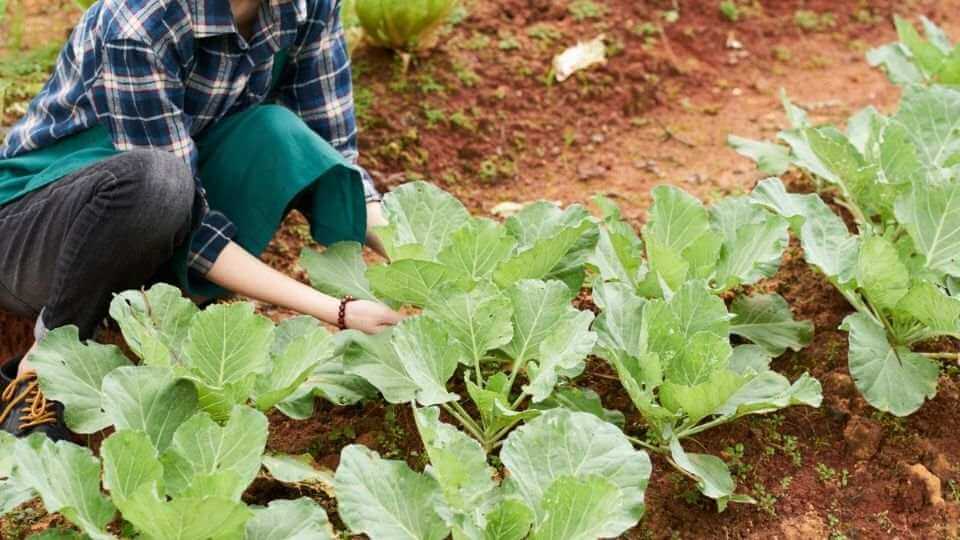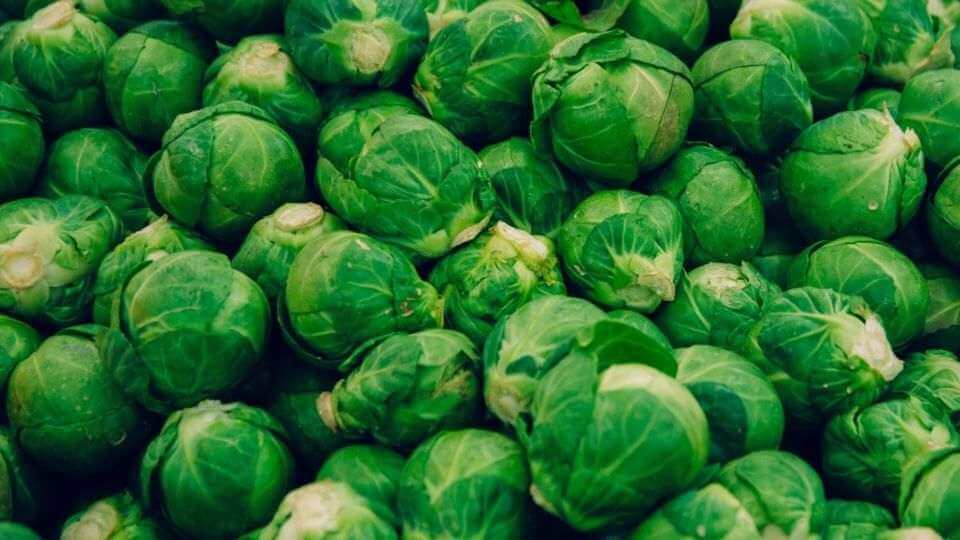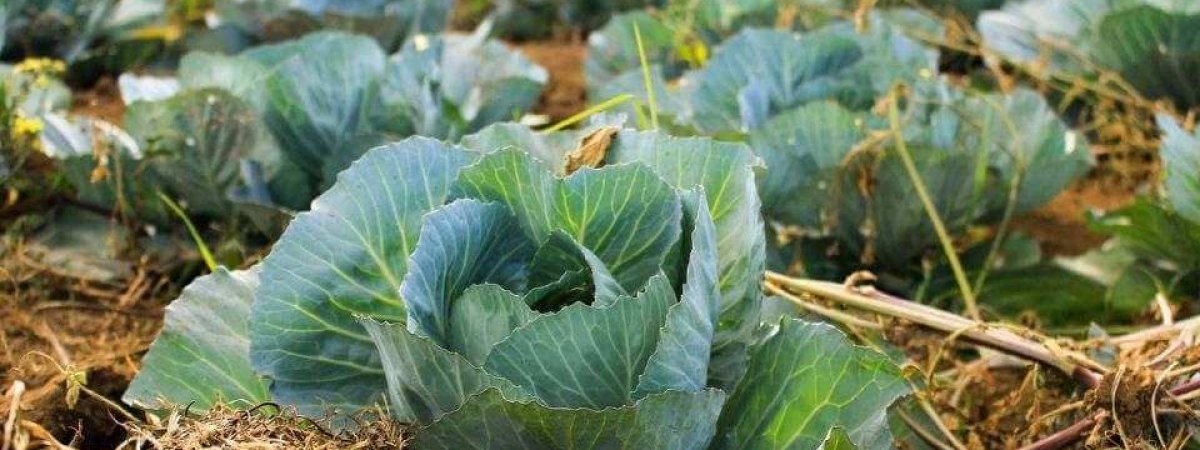Cabbage is among the most common green vegetables that are found in every house. This family of cruciferous vegetables may not be a fascinating pick but it is a healthy choice any day!
High in fibre and vitamin C, cabbages make for a perfect lunch ingredient in various forms like stir fry, salads, or stew. Growing cabbages is also an easy and fast gardening process to practice at home.
For people who have a knack for gardening and want to have their vegetable garden, we are here with detailed information on how to grow cabbages. If you already have a green backyard with your favorite veggies, it’s time to add cabbages as well!
How to grow cabbages?
When it is about growing cabbages, you need to start by choosing the right variety. Home cooks and professionals chefs have their specific picks based on the kind of dishes to wish to prepare as there are dozens of varieties out there.
You can easily find red and green cabbages at the supermarkets and grocery stores. These belong to the Brassica oleracea family. Cole crops is also a wide cabbage variety that covers several from the Brassica family, including kale, brussels sprouts, collard greens, etc.
We have discussed the other varieties later in the blog that will help you make the right choice. Let’s now move to the right location for growing cabbage.

Right site to grow cabbages
When you are learning how to grow cabbages, you should consider choosing the right location for the vegetable in your garden for the perfect yield.
- Cabbage grows well in rich, well-drained soil with a high content of organic matter.
- Make sure to keep the planting beds ready before you plant the cruciferous vegetable.
- For preparing the planting site, cover the beds using commercial organic planting mix or aged compost up to 2-3 inches and turning it to 12 inches deep.
- Cabbages love the company of soil with a pH range of 6.5 to 6.8.
- If you have faced a problem of clubroot disease before in the garden, keep the pH around 7.0 or a little higher. You can add lime to increase the pH level of the soil.
- Increase the nitrogen level of the soil that is sandy or has experienced heavy rain recently. You can use nitrogen supplement from a garden market (shop) or adding a well-aged compost with also do the job.
- To promote leafy growth, add an average amount of cottonseed meal or nitrogen-rich blood meal to your soil before the planting stage.
Planting cabbage
- You must harden the plants before planting cabbage seedlings.
- Transplant the tiny plants outdoors on a good weather day (cloudy afternoon will do). Choose a day two to three weeks before the last frost of spring.
- Plant the seedlings in a distance of 12-24 inches in rows based on the size of the cabbage head you desire. The closer is the seedlings planted, the smaller heads you will have.
Growing Cabbages
- When your cabbage seedlings grow to a height of 5 inches, plan to take them away for transplantation in the garden or backyard.
- The thinned seedlings need proper mulch to retain soil moisture and temperature.
- Make sure to water the cabbage plant every week up to 2 inches per square foot.
- The right temperature range of the soil for growing cabbages is 60 to 65° F. When the young plants are exposed to a temperature less than 45°F for quite some time, you may see loose heads forming from the soil.
- In cold weather, ensure covering the cabbage plants.
- Cabbage plants require fertilizers every 2 weeks after transplantation. Use a balanced fertilizer (10-10-10).
- Three weeks after you transplant the cabbage plant, use a nitrogen-rich fertilizer. The cruciferous vegetable demands nitrogen in the initial growth stages.
- Carry out crop rotation to keep away soil-borne diseases.
Harvesting cabbages
- Cabbages are prepared for harvest in a period of 80 to 180 days when you go by the process of, ‘how to grow cabbage from seeds’. However, the exact time is based on the variety of green vegetables you choose.
- Some variety may even grow within 60 to 105 days from the day of transplanting.
- Cut the cabbages with firm heads, and having a base of 4-10 inches.
- Start harvesting the cabbages before it gets warm in spring. During this time, the cabbages will be sweet.
- The cabbages you grow for winter or fall harvest can be safe under snow covering. All you need is to pull away from the spoiled leaves on the outside after harvesting.
- To have additional heads from a single plant cut the head in the middle of the stem but leave multiple leaves attached to its stem stump. Small heads are of the size of a baseball that grows from the stalk left for a late harvest.
Storing cabbages
- Cabbages can be stored in the refrigerator for a week or two or maybe even longer.
- Home cooks can also dry and freeze cabbages.
- The cabbage seeds are sprouted by many gardeners and chefs.

Pests and diseases affecting cabbages
One of the most significant issues faced while growing cabbages at home is splitting. The condition involves the splitting of the cabbage heads before reaching maturity. It is mostly seen in early-season and fast-growing cabbage varieties.
Some reasons that lead to the splitting of your cabbages in the garden is overwatering, drought, heavy rains, etc. You can keep away from splitting by adding mulch to the plant for retaining soil moisture and temperature.
To keep your cabbages away from diseases like a purple blotch, clubroot disease, black speck disease or any kind of fungal, viral and bacterial diseases, you need to take proper care of the plant throughout the growing period.
For avoiding clubroot disease, just boost the soil pH level by adding lime juice. When affected by purple blotch, cabbages need wet foliage.
Excessive exposure to cold weather can result in black speck disease of cabbages that can be treated by higher potassium levels in the soil. You can keep away all the fungal, viral, and bacterial diseases with commercial potting soil.
The cabbage plants attract pests with split heads. So, it is always effective to choose disease-resistant varieties of the cruciferous vegetable. The common pests that harm cabbages are root maggots, cabbage worms, aphids, cabbage loopers, etc.
The best way to handle a pest infestation when growing cabbages is to cover the plant with a floating cover. When affected by aphids, wash them under a powerful water stream. However, do not damage the crop.
As soon as you wash away the aphids, trim the affected areas before the harvest season. In the case of worms and loopers, pick the pests with your hands and throw them far away from the crop. You can use garlic or neem solution to spray on the cabbages.
Varieties of cabbages to choose from
As promised above, here are the cabbage varieties found in different shapes, sizes and color:
- If you want an early harvest type, choose from the Stonehead or primo variety.
- The fast-maturing types include quick start and golden acre. These yield heads of around 3 pounds!
- Gardeners who seek growing cabbages of savoy types can choose between Wirosa (a late variety) and Alcosa (an early variety). These thrive well in southern gardens but requires extra care in the North.
- The ones that resist splitting are the early jersey wakefield – an heirloom of 2-3 pound heads, slightly pointed.
- The Gonzales variety yield softball-sized cabbage heads that suit perfectly for smaller home gardens or backyards.
- To choose from the disease-resistant varieties, the best options are cheers and Blue Vantage.
- Home gardeners wishing to grow cabbages for a fall or winter harvest can try Chinese cabbage or red cabbage. The best varieties among these include Ruby Perfection, Integro, and Li Ren Choy.
In a Nutshell
Cabbages are cruciferous vegetables that make for a great pick when planning to have a home garden replete with green veggies. This ‘how to grow cabbages’ guide will come to your rescue anytime you feel like growing your cabbages.
Tell you how did it go for you in the comments section below!
You may also like to read
How to Grow Cauliflower? Start with Your Vegetable Garden at Home!
How to Grow Broccoli? Ways of Growing and Harvesting Broccoli at Home






